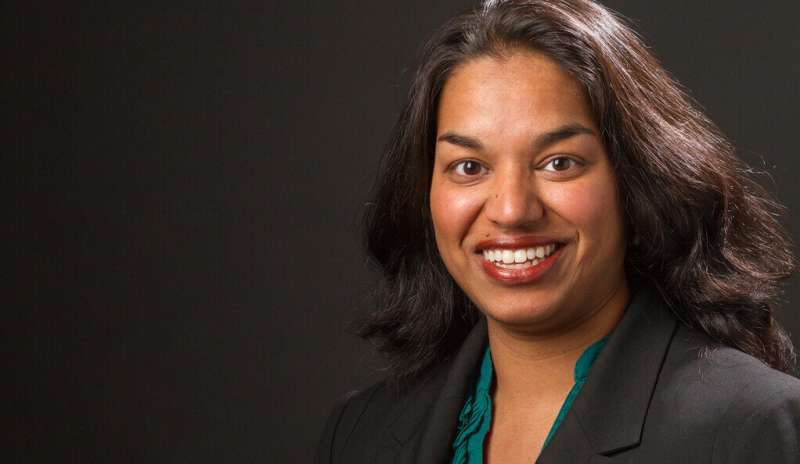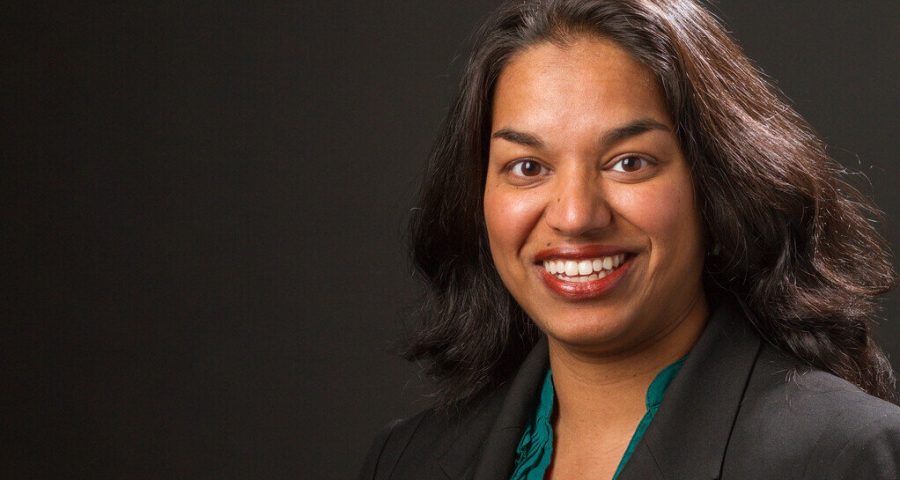
While nearly 6 million adolescents and young adults in the United States have a substance use disorder, only 8% receive treatment, according to data collected in 2019. This treatment gap is a critical problem, says Deepa Camenga, associate professor of emergency medicine at Yale School of Medicine and associate director of pediatric programs for the Yale Program in Addiction Medicine.
As a pediatrician and addiction medicine specialist, Camenga provides diagnostic and outpatient treatment services for children and youth at risk for substance use disorders, and often works to link them to higher levels of care. She has helped dozens of families identify available treatment programs, advocate for appropriate insurance coverage for services, and figure out how to pay for necessary treatment that is not covered by insurance. At the same time, she works with parents to keep their child safe as they wait weeks for an appointment or treatment bed. Recently, with other pediatricians on the American Academy of Pediatrics Committee on Substance Use and Prevention, Camenga co-authored a policy statement published in Pediatrics, which offers recommendations for policymakers and insurers to help improve access to these services.
Camenga sat down with Yale News to talk about this health care disparity and what might be done about it. This interview has been condensed and edited.
What is the scope of the problem?
Deepa Camenga: Substance use impacts all age groups. For example, newborns can be exposed to substances in utero. Approximately one out of eight children lives with a parent with a substance use disorder. It is estimated that 1.1 million teens in the U.S. have a diagnosable substance use disorder. However, many others experience serious problems related to using substances, such as motor vehicle accidents, unintentional overdoses, or violence.
Why do so few young people get the assessment and treatment they need?
Camenga: There are barriers to accessing substance use services that are universally experienced by all age groups. These include stigma, lack of availability of services, lack of awareness about treatment programs, and lack of medical training in how to diagnose and treat substance use disorders.
Children, however, also experience a unique set of barriers. The workforce trained to identify and manage substance use among teens or younger children is miniscule. As a result, there are very few substance use treatment systems that are tailored for children and adolescents. The few programs that do exist are often out of reach to families due to cost, distance, or lack of timely availability of beds.
How important is prevention and early intervention when it comes to substance use in young people?
Camenga: It is extremely important. Substance use at an early age can have damaging long-term effects. In my practice, I have found that if you provide the right education and deliver the right intervention at the right time, a young person can substantially change their health and wellness trajectory.
What are some ways to help more children get the right intervention at the right time?
Camenga: For one thing, it’s not one size fits all. Funding tends to go towards programs that are universally applied. I think communities need a suite of different options to address prevention or substance use because no one thing works for everybody.
Telemedicine has been a game changer for care delivery. Because the workforce is so scant, the only way those trained in this care can reach a larger group of people is through technology. We have seen the tremendous impact of telemedicine during the pandemic and self-administered digital and mobile prevention interventions can also decrease barriers. I think technology can be leveraged even more to help improve access.
However, these solutions can only have impact if there is an appropriately trained pediatric workforce that can identify, treat, and prevent substance use disorders. Another major barrier to making this a reality is that it takes time to provide high-quality care, and clinicians often do not receive adequate payment for their medical decision making or expertise in caring for children.
What are some of the steps you and your co-authors recommend in the new policy statement?
Camenga: The first recommendation for policymakers and insurers is to enforce the Mental Health Parity Act. Although we have a law that says there should be parity between medical and mental health services, it is often not implemented.
Second, we recommend that the financing system reimburse behavioral health services and medical services provided on the same day to better address the need for team-based care. Substance use prevention and treatment often requires a multi-disciplinary team. Currently, it is very tricky for primary care providers to screen for substance use and have their patients see a behavioral health clinician on the same day. My personal opinion is that this type of financing structure does not serve patients or families, does not address the reality of health care, and needs to change.
We also recommend that pediatric clinicians receive adequate reimbursement for the time they spend on assessment, intervention, initiation of treatment, and linkage to subspecialty care. Currently, it’s very difficult to get adequately reimbursed for that range of services within one visit.
The final one I’ll mention is that different states have models whereby revenue from taxation of tobacco, cannabis, and other products—as well as money from opioid settlement funds—is used for prevention and treatment of substance use. We recommend that prevention and treatment services for children be a priority area for funding.
Who is responsible for making these changes?
Source: Read Full Article
